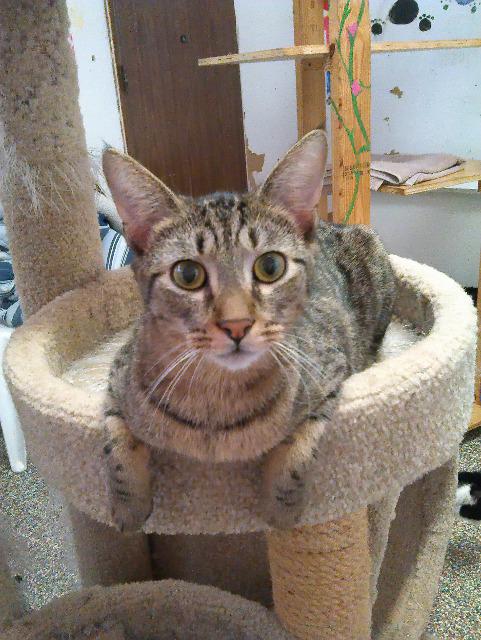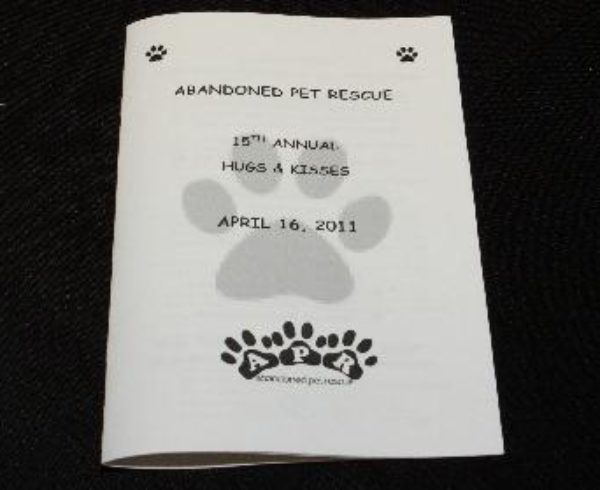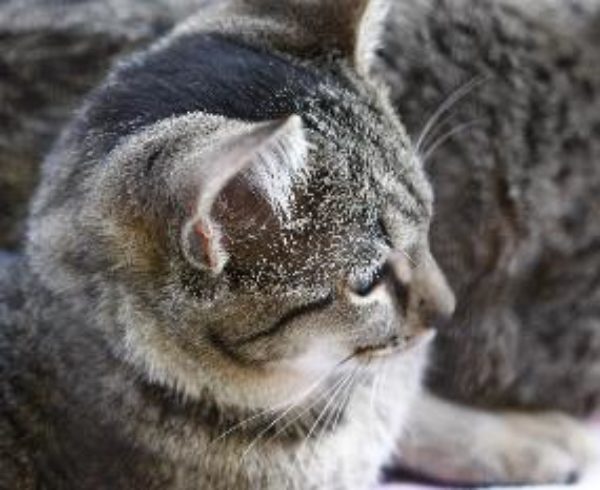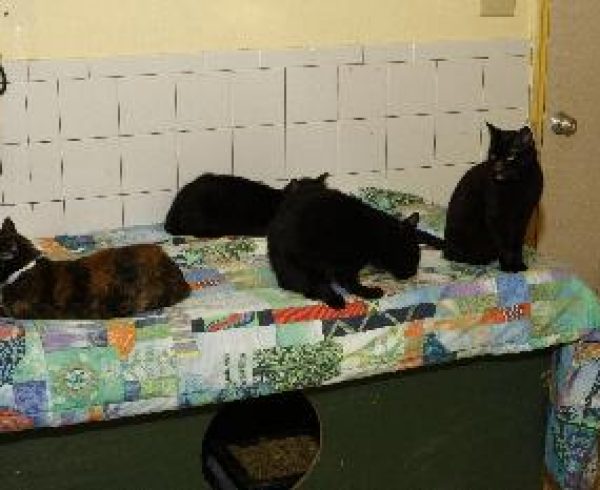By Heather Juliao
As one of the largest no-kill shelters in South Florida, Abandoned Pet Rescue (APR) relies on support from the community through fostering. With its mission of being devoted to the lives of all animals, APR cares for medical fosters. Medical fosters are pets that are in need of a home that can provide specialized care due to a medical condition. Should this initially sound like too grand of a responsibility, please keep reading. After a little investigating, I learned that medical fostering is within reach for many families. Florence Nightingale once said, “For the sick it is important to have the best.” The good news is you do not have to be Florence Nightingale to offer the best to these animals! Here are some common beliefs about medical fostering that quickly turned to debunked myths after my visit to APR.
Myth #1: Medical fostering will be a financial burden.
If you have the compassion required to be a medical foster parent but have concerns about the costs, you may be a perfect candidate. How can this be? Knowing that the stakes are higher for an animal requiring medical care, APR is committed to fully covering these costs. In other words, any medications, prescription food, and visits to the shelter’s assigned veterinarian are 100% financially sponsored by APR*. If you can provide the ingredients for a loving home, you need not worry about the bread!
*Please note that the cost of veterinary care covered by APR is limited to the care of the shelter’s designated veterinarian. Should you opt to visit another provider, APR is unable to reimburse any expenses incurred.
Myth #2: Medical fosters are old, very sick or will die soon.
Medical fosters vary in age, and the image of a sluggish senior pet is purely stereotypical. Regardless, the seniors have much life and personality; you might even be surprised to learn that they require special care. Being in a shelter environment exposes animals to a higher level of vulnerability than living in someone’s home. These animals have been reported to thrive in their foster homes, both physically and with regards to temperament. The effects of human socialization, comfort, and a quiet environment are less feasible in a shelter, but offer consistent and positive results.
Myth #3: Caring for a medical foster is too demanding.
Caring for an animal that requires special medical attention can be intimidating, particularly for those who do not consider themselves “caretakers.” While fostering a pet is a great responsibility to assume, the care required for medical fosters is less arduous than one would assume. When speaking to the shelter staff and those who have participated in medical fostering, I asked how the experience compares with any other pet ownership. “It really hasn’t been any different – if anything it’s been easier,” explained David Banks, who recently opened his home to one of the medical foster dogs. The pets are known for taking their medication without a struggle. In the event that this is a challenging task for either the pet or the foster parent, the staff at APR is open to providing assistance if the pet can be brought to the shelter.
If you still have doubts or are wondering who these loving animals are, allow me to introduce you to a few that I encountered. They may be waiting for a home like yours to settle into!
 Lilia
Lilia
At the young age of three, Lilia disproves that all medical fosters are old. With her snowy, white coat and a contrasting brown, striped tail, anyone can see that Lilia is a special girl. When she was found as a stray about a year ago and brought to APR, the staff immediately noticed her occasional seizures. A seizure condition sounds pretty serious, but Lilia makes for a very low-maintenance pet. Her seizures are fairly spread out, generally occurring once a week and are notably brief with a 15-30 second duration before reverting back to her normal state.
What is more concerning than her seizures is Lilia’s limited time with human contact. The staff believes that she would be much more content and comfortable living in a quiet home. What makes her caring for her different than other cats is simply Lilia’s daily dose of medication, which is fully funded and supplied by APR.
 Delta
Delta
Delta is an incredibly charming 10-year-old canine that does not need much more than a couch to crash on. Due to her heart condition, Delta must take one dose of medication every day. She is believed to be deaf, but you may find it hard to notice. Though she does not bark much, this adoring girl will make her presence known, as she loves to be by someone’s side at all times. It is unclear whether Delta is fully or partially house-trained, but she has received excellent reports when taken on a few brief walks throughout the day.
I witnessed Delta’s friendly and loving demeanor when she greeted me with kisses. Her sweet nature would lead you to believe that she has been loved and spoiled throughout her life, but Delta’s scars paint a very different picture. Although we do not know exactly what happened in her past, it is clear that she is not holding a grudge against anyone!
 Hoover
Hoover
Hoover is a 6-year-old feline who is known best for his loving personality. Unfortunately, this can be overshadowed by his diagnosis of inflammatory bowel disease (IBD). If you are like me, you might be thinking that a pet with this condition is bound to have a series of accidents in your home. I am pleased to report that this is not the case. Rather, I learned that IBD is not uncommon in cats. Hoover’s symptoms manifest when he sometimes cries out in pain when going to the bathroom. It does not appear to impair his daily activities, however – when I came to meet him, Hoover had climbed up a high perch and was relaxing with his roommates.
 Rudy
Rudy
At first glance, you might mistake Rudy for a member of the K9 unit, but this stunning German shepherd shows his force without the police by his side. Rudy survived being hit by a car but sustained injuries to his back paws. Due to a weakened immune system, his paws never fully healed. For this reason, Rudy rocks his socks! The socks protect his wounds from exposure to germs, which he is at a higher risk for while living in a kennel.
Rudy is a perfect example of a pet that thrives outside of the shelter and in a home. In more conventional living quarters, Rudy’s booties would only require attention a couple of times a week (currently his paws get re-wrapped daily). Described as both a sweetheart and leader of the pack, Rudy loves all humans and is best suited to live in a home where he is the only pet.
 Bessie
Bessie
On paper, Bessie may sound like a handful, but she does not ask for much. A senior pit bull with some medical conditions, Bessie just wants to veg out on some cozy blankets. By nature, Bessie is a loving, happy girl – but she is 11 years old and has yet to experience the life she so deserves. The shelter staff believe that a loving foster family would help Bessie live a much more prosperous and happy life.
Bessie has Addison’s disease and IBD, but neither have much of an impact her daily routines. She needs to go outside 3-4 times a day, which is typical for any dog. It turns out that Bessie’s conditions cause more diet restriction than house destruction. Dogs with Addison’s disease have adrenal glands that produce a lower number of hormones than normal. There is no cure for Addison’s, but it is managed by a special diet, daily medication, and an injection approximately every 25 days (which can be administered at APR). If you have a soft spot for Bessie in your heart and in your home, APR has pledged to cover the expenses of medication, veterinary care (including injections), and prescription food.
I encourage everyone to consider medical fostering. Regardless of age or condition, what these animals are in most need of is someone who is willing to love them and give them a chance at a better life. Providing a comfortable and loving environment to a pet that needs it most is an incredible gift, and it comes at much less of a cost than one might think. As stated by anthropologist Margaret Mead, “Never believe that a few caring people can’t change the world. For, indeed, that’s all who ever have.” In summary, we are capable of doing so much more than we think we can.
















